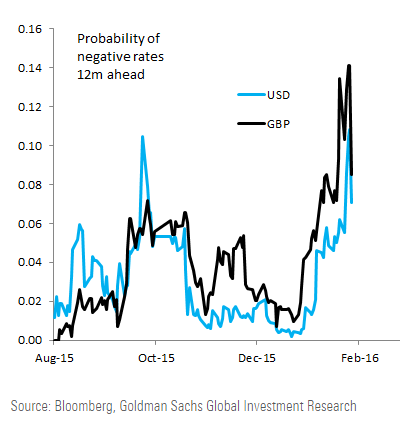As central banks continue to grapple with the increasing risk of deteriorating global growth, some are turning towards negative rates which are likely to widen the current interest rate divide between the currencies. However, as these policies start to bite and the USD strengthens, so too does the pressure upon the US economy.
Friday’s poor US unemployment figures had a surprising impact upon world currency markets buoying the USD by around 0.5%. The unemployment report was largely expected to be a weak number given the fall in a range of metrics in the lead up to the release. However, despite the NFP result of 151k falling well below the 190k consensus, the market largely focused upon the decline in the US unemployment rate to 4.9%. In addition, average hourly earnings rose around 0.5% m/m, suggesting that the fall in jobs growth may just be transitional or a statistical outlier. Subsequently, the market was not convinced of any growing risk to the Fed’s lift off schedule.
However, there is increasing tightening in the global financial conditions which could impact US economic activity in the coming quarter as well as labour conditions. Subsequently, any such slowdown would likely place the forecasted rate hikes to the US Federal Funds Rate at risk of being delayed, or in fact reversed. Although the market consensus is still largely in line with the Fed’s expectations setting, the risk sentiment is starting to falter and the global front end rates have subsequently fallen, as both the ECB and BoJ return to a policy of easing. What this potentially means for the US is the short term, higher repricing of rates, subsequently benefiting both the USD and GBP.
In the medium term, expect the USD to bounce back from its recent routs and continue to rise whilst the diverging monetary policies between the ECB and the Fed continue. In addition, as Japan also moves to undertake a negative interest rate policy, capital will seek yield and the outflows are partially expected to head state side. This further complicates the US Federal Reserve’s policy of interest rate normalisation as the US trade deficit grows in line with the strengthening currency, further impacting shrinking US exports.
Subsequently, both the possibility of further rate hikes as well as continued strength within the US labour markets is now in question. In addition, assuming a 3-month constant OIS spread the probability of future negative rates in the US and UK has recently touched new highs. Despite this concerning indicator, market expectations still largely point towards a range of expected rate hikes throughout 2016. However, given both the recent downturn in world growth, as well as upward pressure on currency valuations, this scenario seems unlikely.
Ultimately, when the market realises that rate normalisation may no longer be on the table, expect a sharp depreciation in the US dollar, which could lead to an additional round of the currency depreciation war throughout Asia.
